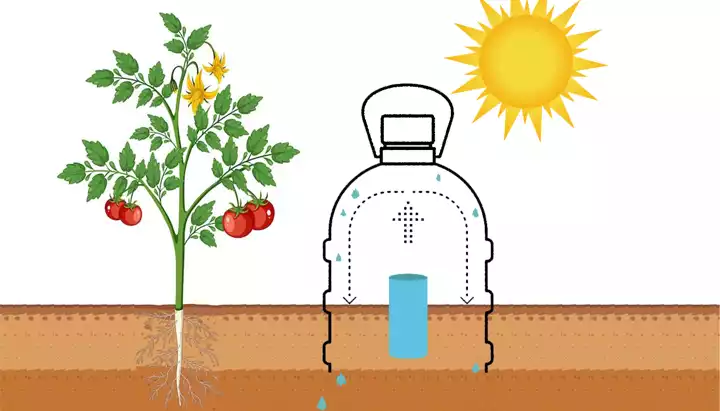Setting Up a Solar Drip Irrigation System
Solar irrigation is an efficient and eco-friendly way to water your garden, utilizing the sun’s energy and the principles of evaporation and condensation. This system is particularly suitable for small gardens and can be constructed using everyday materials. Here’s a detailed guide to help you create your own solar drip irrigation system.
Understanding Solar Irrigation
Solar irrigation harnesses the greenhouse effect within a transparent enclosure, allowing for effective and sustainable watering. This method is perfect for sunny areas and small-scale gardening projects.
Components of a Solar Drip Irrigation System
- Transparent Plastic Cover
- Material: The top part of a 5-liter PET bottle.
- Function: Acts as a mini-greenhouse, trapping heat and moisture.
- Container for Irrigation Water
- Material: A smaller PET bottle, such as a 1.5-liter bottle.
- Function: Serves as the water reservoir for irrigation.
How Solar Irrigation Works
Setup
- Prepare the Cover:
- Cut the top off a 5-liter PET bottle to create a cover.
- Prepare the Water Reservoir:
- Fill a 1.5-liter bottle with water.
- Assemble the System:
- Place the smaller bottle inside the larger one.
- Seal the larger bottle with its cut top to form a closed environment.
Function
- Evaporation: The water inside the smaller bottle evaporates due to the heat trapped by the greenhouse effect.
- Condensation: Moisture condenses on the cooler walls of the larger bottle and drips down, providing a consistent supply of water to the plants.
This natural cycle mimics gentle rainfall, ensuring your plants receive moisture efficiently.
Installation Tips
- Location: Position your solar irrigation system in a sunny area of your garden to maximize evaporation.
- Water Refills: Regularly check the water level in the smaller bottle and refill as necessary to maintain consistent moisture for your plants.
- Scaling Up: For larger gardens, you can set up multiple solar irrigation units to cover more area.
Advantages of Solar Drip Irrigation
- Cost-Effective: Utilizes recycled materials, minimizing costs and environmental impact.
- Low Maintenance: Once set up, it requires minimal oversight—just occasional water refills.
- Water Efficiency: Reduces waste by directly condensing moisture where it’s needed, preventing evaporation loss.
- Eco-Friendly: Promotes sustainable gardening practices by using solar energy and recycling plastic bottles.
Conclusion
Solar drip irrigation is a simple yet effective solution for gardeners aiming to conserve water and promote sustainability. By repurposing everyday materials, you can create a self-sustaining irrigation system that not only helps maintain a lush garden but also aligns with eco-friendly gardening practices. Whether you have a small vegetable garden or various potted plants, implementing solar irrigation can significantly enhance your gardening experience. For more innovative gardening solutions, explore further resources on sustainable practices!
